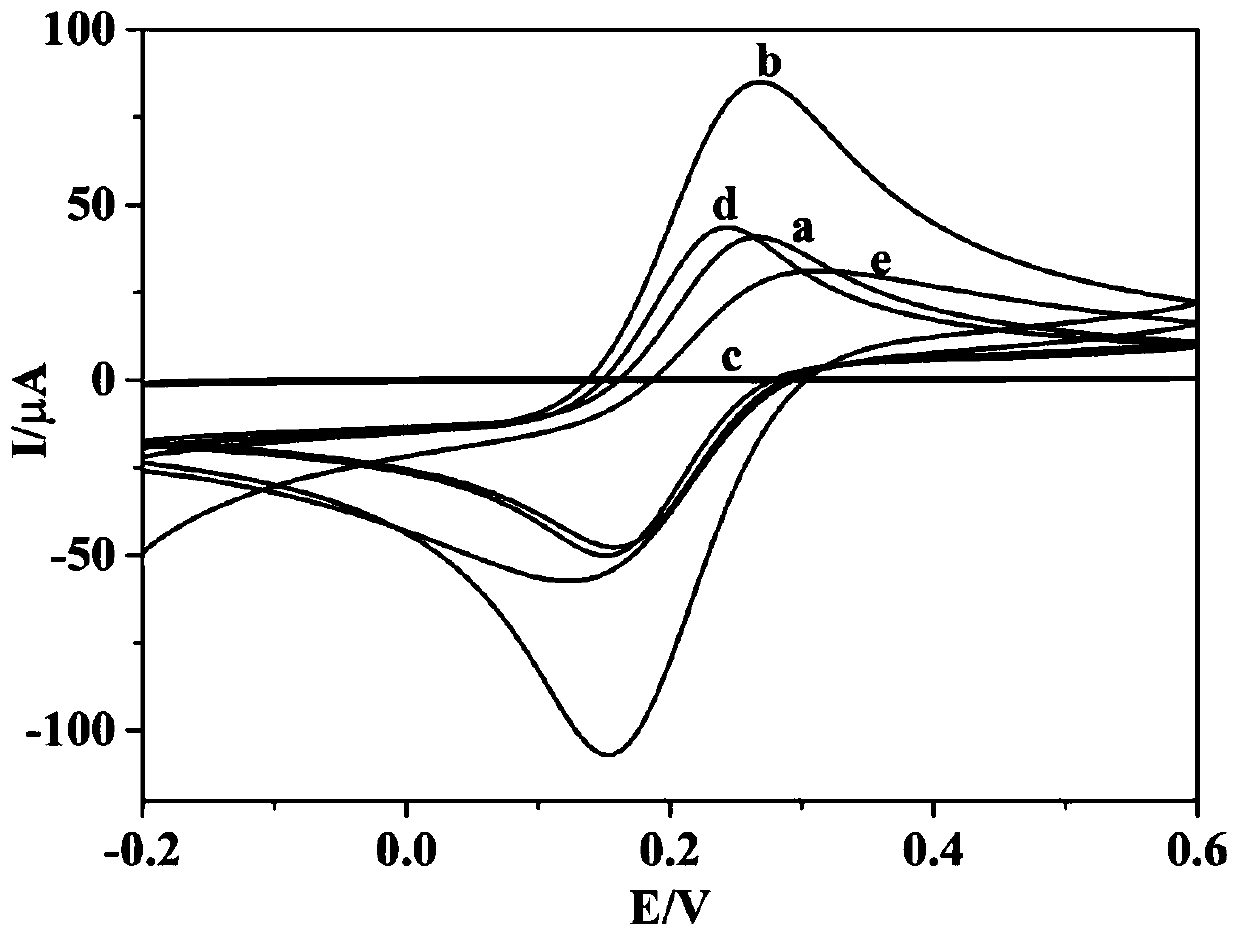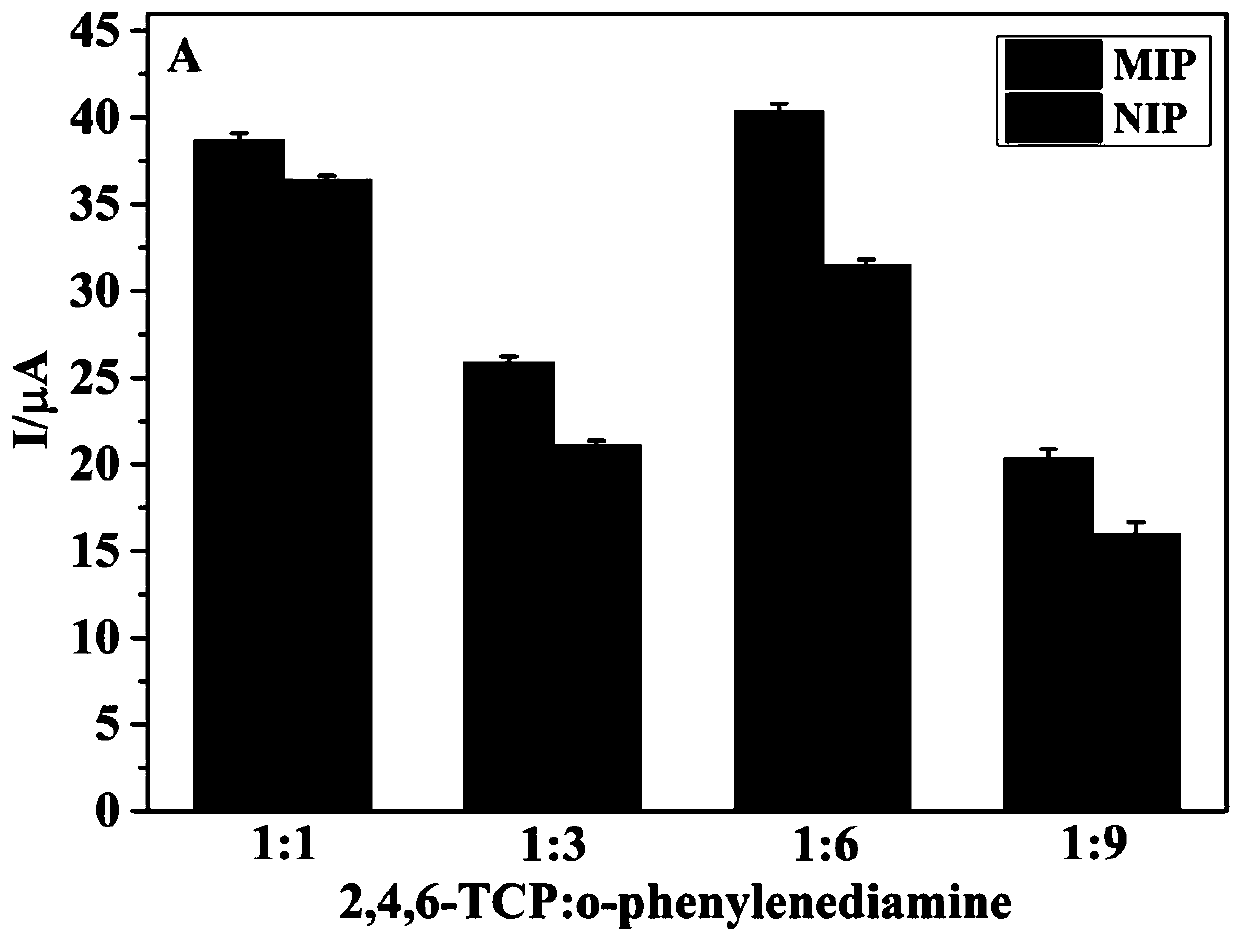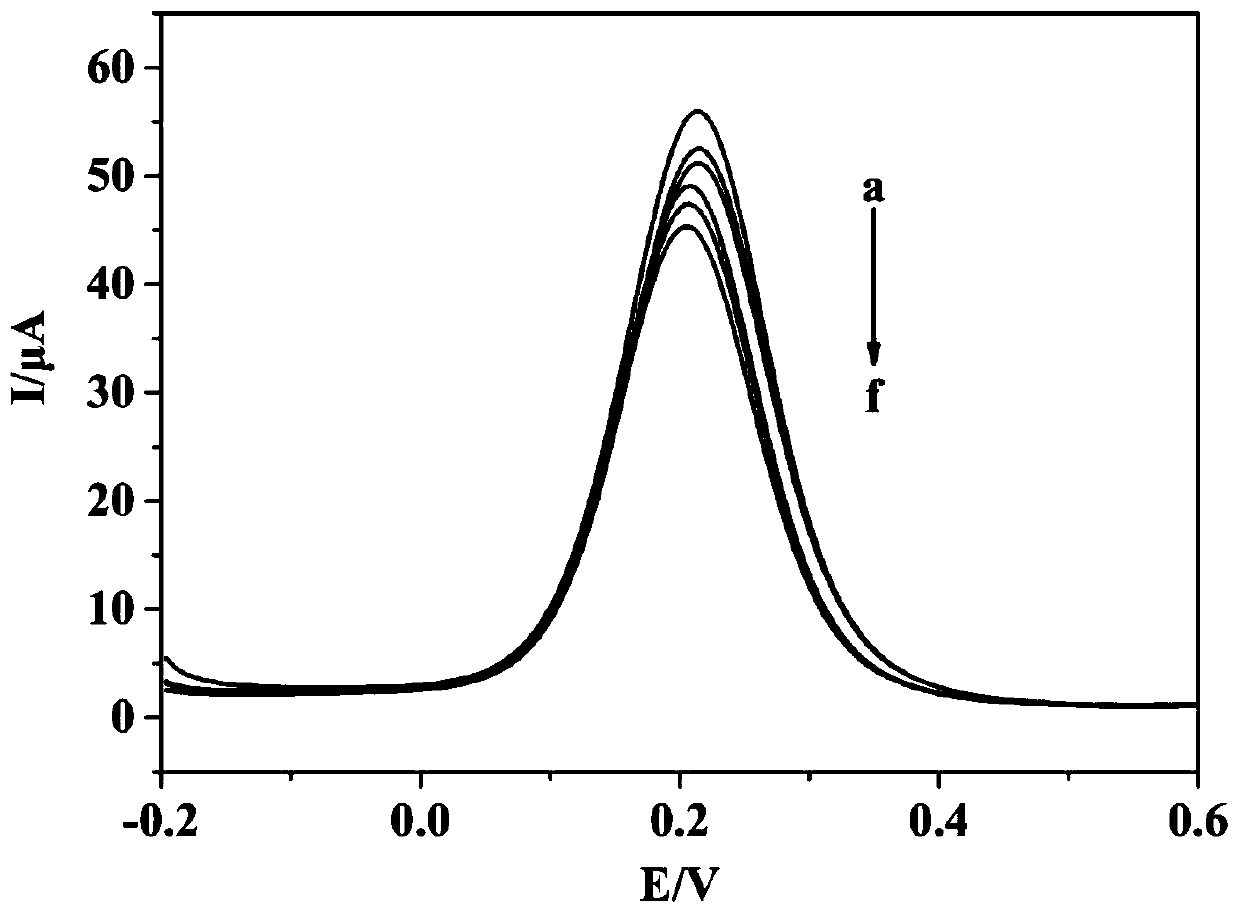An electrochemical sensor for measuring 2,4,6-trichlorophenol and its preparation and application
A trichlorophenol, electrochemical technology, applied in the direction of material electrochemical variables, scientific instruments, instruments, etc., to achieve the effect of improving anti-interference ability, good sensitivity, and strong specific recognition ability
- Summary
- Abstract
- Description
- Claims
- Application Information
AI Technical Summary
Problems solved by technology
Method used
Image
Examples
Embodiment 1
[0021] Preparation of the sensor:
[0022] Take a total of 5 μL (volume ratio of 3:1) of a mixed solution of carbon quantum dot solution with a volume concentration of 4% dispersed in distilled water and a mass concentration of 1% chitosan acetic acid solution, and drop-coat it on the surface of the polished bare glassy carbon electrode. Tumble dry under infrared lamps. After placing it in a mixed solution of 1mM 2,4,6-TCP ethanol-water solution and 1mM o-phenylenediamine ethanol-water solution (the molar ratio is 1:1), the pH of the solution was adjusted to 5 with 0.05M phosphate buffer solution. In the range of 1.0V, the cyclic voltammetry was scanned for 20 cycles at a scan rate of 50mV / s, and the electrochemical polymerization was formed into a film. After the polymeric film was naturally dried at room temperature, the electrode prepared above was scanned by cyclic voltammetry in a 1% (m / V) NaOH solution for 6 laps at the same scan rate in the potential range of 0-1.5V, a...
Embodiment 2
[0024] Preparation of the sensor:
[0025] Take a total of 9 μL of a mixed solution of a carbon quantum dot solution with a volume concentration of 4% dispersed in distilled water and a mass concentration of 1% chitosan acetic acid solution (volume ratio is 3:1), and drop-coat it on the surface of the polished bare glassy carbon electrode. Tumble dry under infrared lamps. After placing it in a mixed solution of 1mM 2,4,6-TCP ethanol-water solution and 6mM o-phenylenediamine ethanol-water solution (molar ratio 1:6), adjust the pH of the solution to 7 with 0.05M phosphate buffer, and adjust the pH of the solution to 7 at 0- In the range of 1.0V, the cyclic voltammetry was scanned for 20 cycles at a scan rate of 50mV / s, and the electrochemical polymerization was formed into a film. After the polymeric film was naturally dried at room temperature, the electrode prepared above was scanned by cyclic voltammetry in a 1% (m / V) NaOH solution for 6 laps at the same scan rate within the...
Embodiment 3
[0027] Preparation of the sensor:
[0028] Take a total of 9 μL of a mixed solution of a carbon quantum dot solution with a volume concentration of 4% dispersed in distilled water and a mass concentration of 1% chitosan acetic acid solution (volume ratio is 3:1), and drop-coat it on the surface of the polished bare glassy carbon electrode. Tumble dry under infrared lamps. After placing it in a mixed solution of 1mM 2,4,6-TCP ethanol solution and 6mM pyrrole ethanol solution (the molar ratio is 1:6), adjust the pH of the solution to 7 with 0.05M phosphate buffer solution, within the range of 0-1.0V, Electrochemical polymerization was performed under the conditions of 20 cycles of cyclic voltammetry scanning at a scan rate of 50 mV / s. After the polymeric membrane is naturally dried at room temperature, the template molecules are eluted with the same scan rate of 1% (m / V) NaOH solution as the eluent within the potential range of 0-1.5V for the electrode prepared above. After dr...
PUM
 Login to View More
Login to View More Abstract
Description
Claims
Application Information
 Login to View More
Login to View More - R&D
- Intellectual Property
- Life Sciences
- Materials
- Tech Scout
- Unparalleled Data Quality
- Higher Quality Content
- 60% Fewer Hallucinations
Browse by: Latest US Patents, China's latest patents, Technical Efficacy Thesaurus, Application Domain, Technology Topic, Popular Technical Reports.
© 2025 PatSnap. All rights reserved.Legal|Privacy policy|Modern Slavery Act Transparency Statement|Sitemap|About US| Contact US: help@patsnap.com



